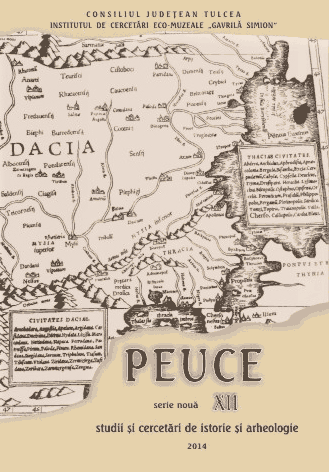Isaccea–Noviodunum. Artefacte din materii dure animale descoperite in 2013 si 2013
Isaccea-Noviodunum. Osseous Material Artefacts Found in 2012, 2013
Author(s): Corneliu Beldiman, Diana Maria Sztancs, Aurel StănicăSubject(s): Archaeology
Published by: Institutul de Cercetari Eco-Muzeale Tulcea - Institutul de Istorie si Arheologie
Keywords: ancient technolog;, bone and antler artefacts; decorated artefact; Isaccea–Noviodunum; Middle Ages; Roman period; artefacte decorate; epoca romană; evul mediu; industria materiilor dure animale; Isaccea–Noviodunum; tehnologie antică
Summary/Abstract: The archaeological researches carried out in 2013 in various sectors of Isaccea-Noviodunum, Tulcea County (NOV) made possible the recovery of an assemblage comprising osseous material artefacts. Their study continues the systematic analysis started in 2013 for this type of pieces found at Noviodunum. Such artefacts already form here a rich collection, gathered during the past six decades of archaeological excavations. Two pieces discovered in 2012 were added to those from 2013. The dispersion of discoveries in various sectors of the site does not allow us to formulate detailed conclusions. We should take into consideration, however, the existence of some workshops where osseous material artefacts (especially those made of red deer antler) were produced during the Middle Ages (13th –14th centuries). These pieces were probably used in composite artefacts, such as furniture, various objects made of wood, tools, weapons etc. The raw materials discovered in various stages of manufacture (blanks, repaired pieces etc.) are proofs in this respect. This analysis aims at extensively highlighting the last finds and the related primary data. The catalogue offers all the significant data regarding the artefacts, presenting them according to the current methodology of the domain. The illustration includes numerous figures of overviews and macrophotographs, as well as an online set of photographs (https://www.flickr.com/photos/26792353@ N05/sets/). In order to achieve the objectives of the study, optical means of observation were used (optical microscope, zoom ×10 – × 40; digital microscope, zoom ×10 – ×400); complete sets of images at various scales were taken (microscopic including), thus initiating an image data base of the artefacts found at Noviodunum. The catalogue includes NOV/2012 and NOV/2013 artefacts, numbered from 1 to 27, classified typologically. Chronological and cultural data related to the studied artefacts were provided by the author of the researches (A.-D. Stănică) and were correlated (whenever possible) with the observations regarding the specificity of the typological and technological aspects. The data are preliminary and may be revised. The main periods of inhabitation of Noviodunum site are dated from the 1st to the 7th century, the 10th to the 11th and the 12th to the 15th century. The analysed artefacts are dated grosso modo to the Roman period (1st – 4th centuries) and the Middle Ages (13th – 14th centuries). Each artefact was studied according to a standard protocol comprising several levels and components with the aim of registering the data in an extensive/exhaustive manner (table 1). Raw materials, status of conservation, typology, morphology, dimensions, manufacture traces, use-wear traces, and functionality were the main aspects taken into account. The standard form includes data regarding the artefact, according to the following structure: Indicative/Code ● Type ● Typological code ● Category (tools, weapons, adornments, raw ma
Journal: Peuce (Serie Nouă) - Studii şi cercetari de istorie şi arheologie
- Issue Year: XII/2014
- Issue No: 12
- Page Range: 233-268
- Page Count: 36
- Language: Romanian

